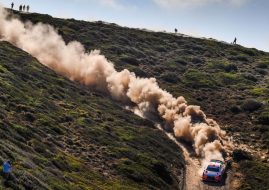Audi Quattro (1981-1987) - First Four-wheel-drive Rally Car
In the history of the World Rally Championship, there have been a number of cars that have marked a specific period of competition, and Audi Quattro certainly deserves a place among them. For a lot of people, this car is synonymous with the ‘golden era’ of Group B cars. Even if you do not belong to that category, there is one standard that the car undeniably set – the Audi Quattro was the first rally car ever in WRC with a permanent four-wheel-drive.
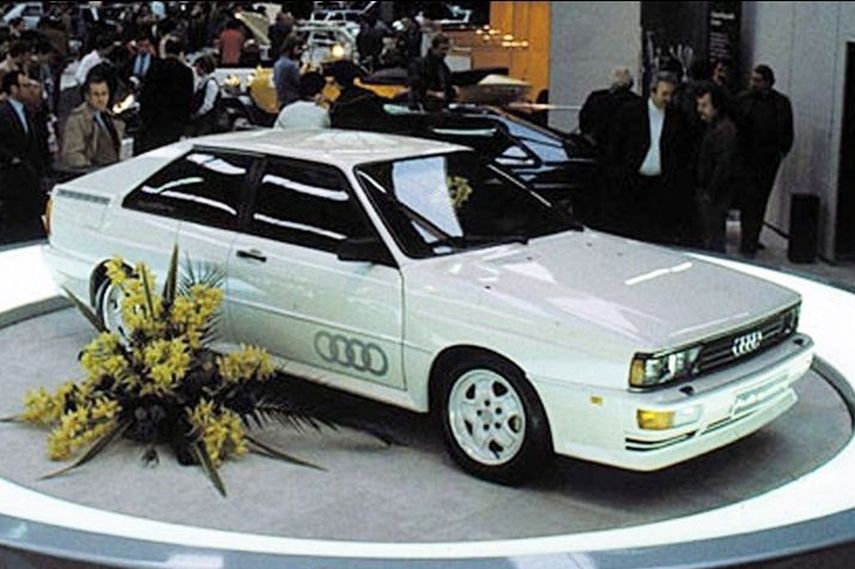
Audi Quattro at 1980 Geneva Motor Show
Starting with a victorious debut in the 1981 WRC season
Back in 1979, the FISA legalized all-wheel-drive for rallying, but most manufacturers believed it was a too complex solution and that cars would be too heavy. Audi’s engineers were busy preparing the road version of the first Audi Quattro and they decided to produce a 4WD rally car. The Audi Quattro was presented at the Geneva Motor Show in March 1980, and the racing version had a competitive debut driving at the 1980 Janner Rallye in Austria.
It was largely based on the body shell of the road-going Quattro models and the engine of the original competition version which produced approximately 300 bhp. The original engine was the 2,144 cc inline-5-cylinder 10 valve SOHC, with a turbocharger and an intercooler. It produced 200 hp and torque of 285 Nm, propelling the road-version Quattro from 0 to 100 km/h in 7.1s and reaching the top speed of over 220 km/h. The engine was eventually modified to a 2,226 cc inline-5 10 valve. Later in 1989, it was alternated to a 2,226 cc inline-5 20v DOHC setup, producing 220 hp.
In 1981, Audi Quattro debuted in the World Rally Championship with immediate success. Hannu Mikkola won two rallies (Sweden and Great Britain) and achieved one more podium (Finland), while Michele Mouton won Rallye Sanremo and became the first and only woman to win the world rally.
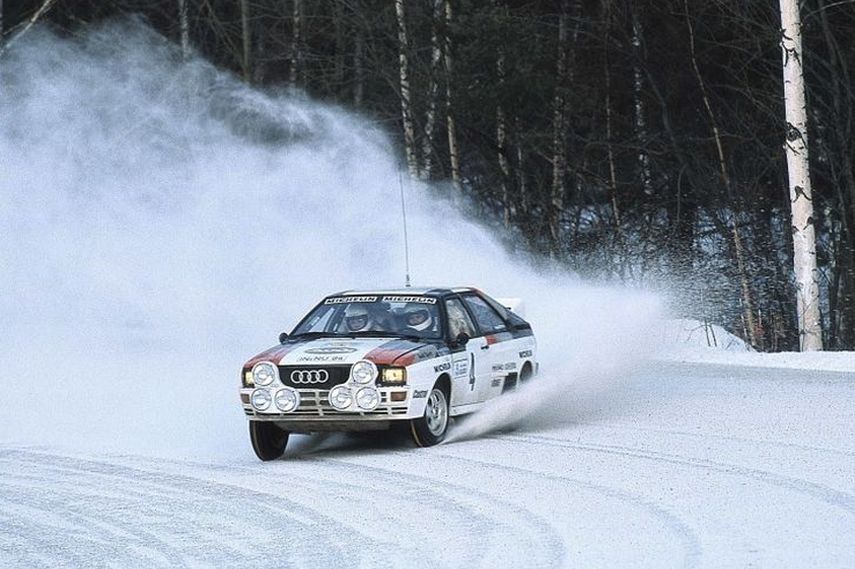
In 1981 Audi revolutionized the World Rally Championship with the “original” quattro
Audi became the 1982 manufacturers’ world champion
In 1982, Audi won seven rallies and became the manufacturers’ world champion. In the drivers’ standings, Mouton was 2nd, Mikkola 3rd, and Stig Blomqvist 4th. This was the first year of the new Group B regulations, so Audi introduced the A1 evolution of Quattro, raising the power from turbocharged inline 5-cylinder engine to around 350 hp.
The next evolution A2 was introduced during the 1983 season. Combining the A1 and A2 versions, Audi’s drivers had won five WRC races in the 1983 season and Hannu Mikkola became the world champion. The team was 2nd in the classification behind Martini Lancia.
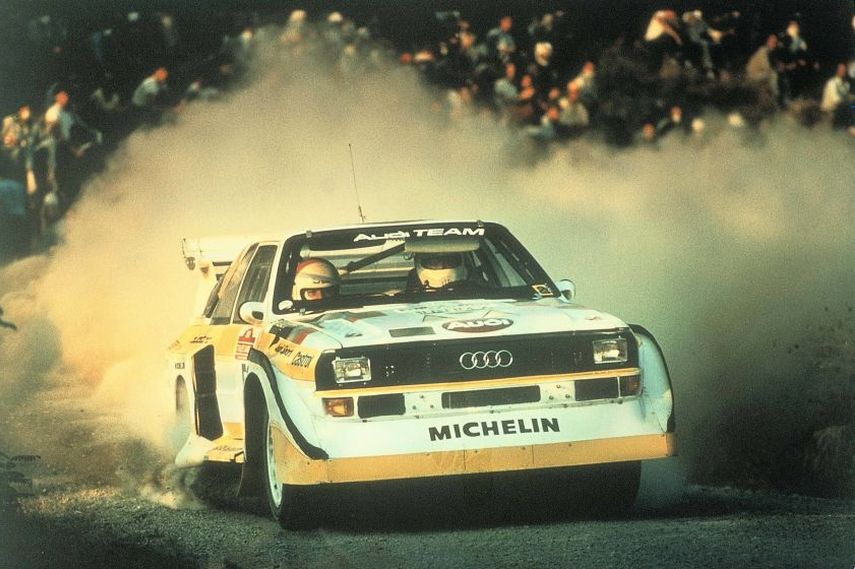
In 1985, Walter Röhrl was the winner of the Rally San Remo with the Audi Sport quattro S1
Double world title in the 1984 season
The 1984 season was the most successful for Audi, with Stig Blomqvist becoming the world champion and winning the second world title for the team that now consisted of the new entrant to the team, Walter Röhrl, together with ‘old’ drivers Mikkola and Mouton. They had two winning cars that season: the first was an old Audi Quattro A2 (winning six rallies) and the other was the newly-introduced shortened Audi Sport Quattro S1.
It featured an all-aluminium alloy and a 2,133 cc 20v DOHC engine slightly smaller than that of the Audi Quattro (in order to qualify for the 3-liter engine class after the scale factor applied to turbo engines). In the road-going version, the engine was capable of producing about 305 bhp, with the competition cars initially producing around 450 bhp.
In the 1985 season, Peugeot took over the domination with 205 T16, and Audi ended up winning only one WRC race (Walter Röhrl, Sanremo). The team finished second in the championship.
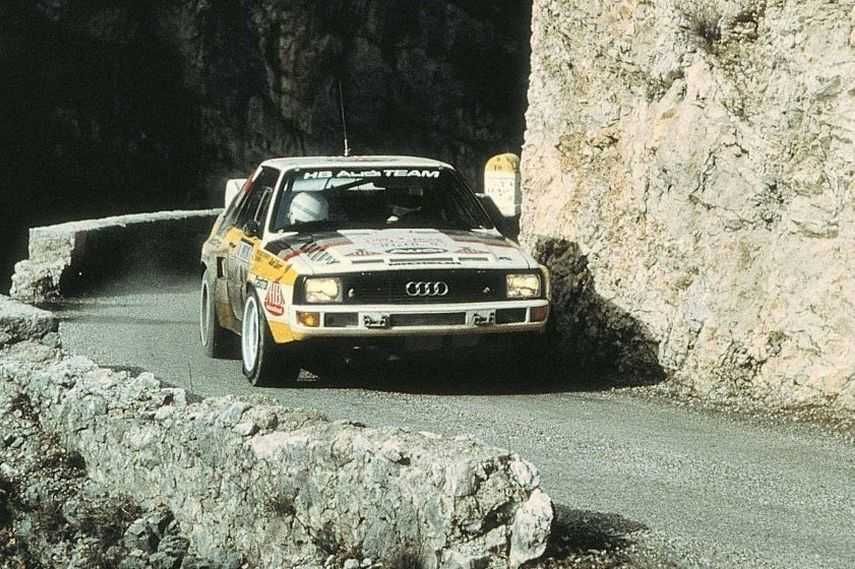
In 1985 Peugeot dominated in the championship, Audi scored only one victory
S1 version of Audi Sport Quattro had around 600 hp
At the end of 1985, the Audi Sport Quattro S1 E2 was introduced as an upgrade of the Audi Sport Quattro. The car featured an inline 5-cylinder engine that displaced 2,110 cc and produced an officially quoted figure of 350 kW (476 hp). The actual power figure of that monster was in excess of 500 bhp.
In addition to the improved power output, an aggressive aerodynamic kit was added which featured very distinctive wings and spoilers to the front and rear of the car to increase downforce. The weight was reduced to 1,090 kg and the S1 could accelerate from 0-100 km/h in 3.1 seconds. Some of the cars were supplied with a “power-shift gearbox”, a forerunner of the DSG technology.
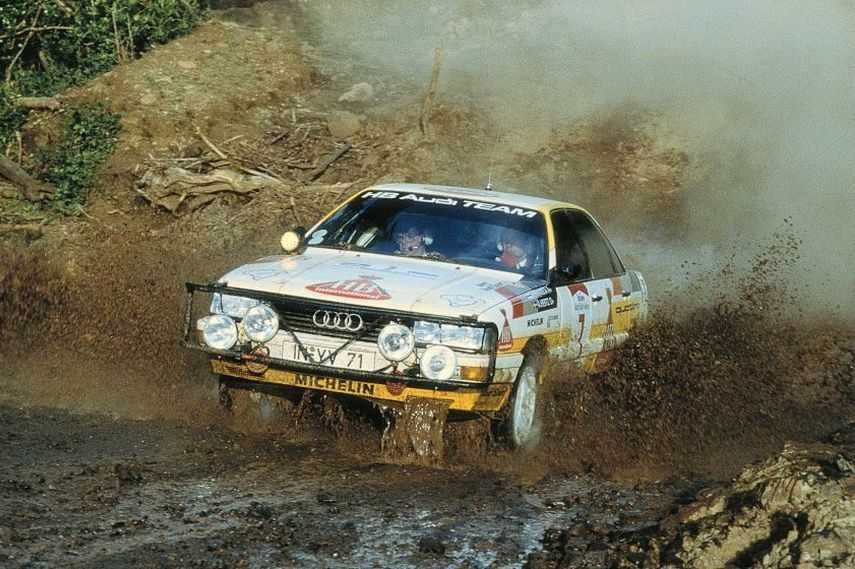
Hannu Mikkola with Audi 200 quattro at 1987 Safari Rally
Ahead of the curve at the famous Pikes Peak
The S1 E2 would become the final car produced by Audi for the Group B. The final factory machines of 1986 were rated at about 600 bhp. After the tragic 1986 Rally Portugal, when Henri Toivonen and his co-driver Sergio Cresto died, the works team withdrew from the championship.
Group B cars were banned and replaced with Group A in 1987. Audi introduced 200 Quattro, with which the team achieved 2nd place in championship. In addition to the WRC competition, Audi Quattro won the Pikes Peak International Hillclimb three times in a row: Michele Mouton in 1985, Bobby Unser in 1986, and Walter Röhrl in 1987.
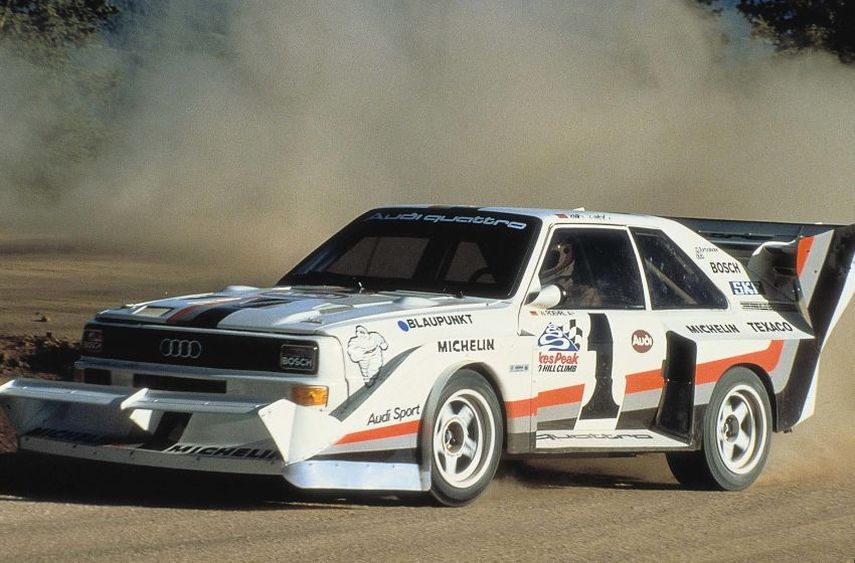
In 1987 Walter Röhrl storms the Pikes Peak in record time with the Audi Sport quattro S1
The best cars are never truly outdated
Thirty years after the Group B era, we can conclude that Audi Quattro, in all its versions, left an indelible mark on the history of rally driving, with 23 WRC victories, 2 manufacturer and 2 driver titles.
Audi paid tribute to that car using the badge ‘quattro’ for all its vehicles with permanent four-wheel-drive (continued even today), so we can safely say that the Ur-Quattro (Ur standing for original in German language) is still very much alive, even today.
Video : Tribute to Audi Sport quattro
Photos: audi-mediacenter.com




